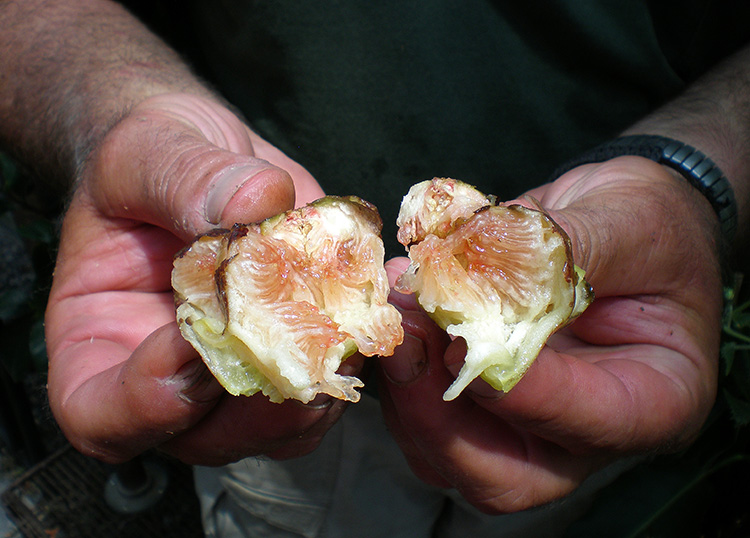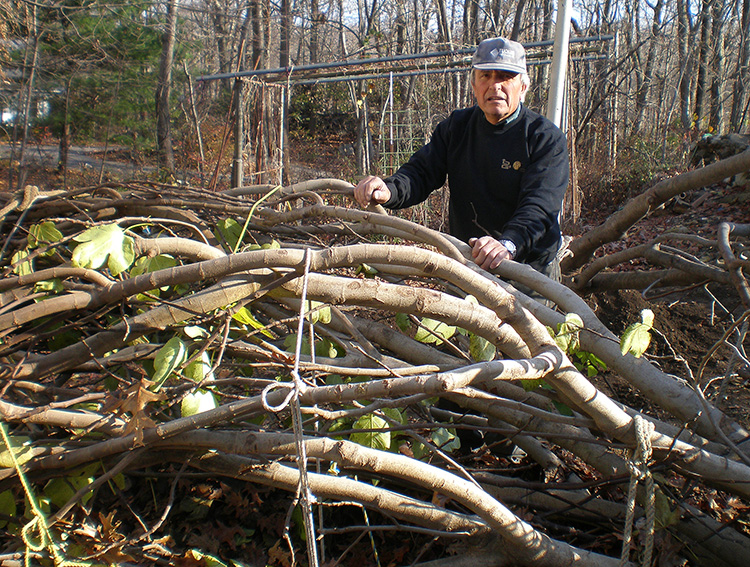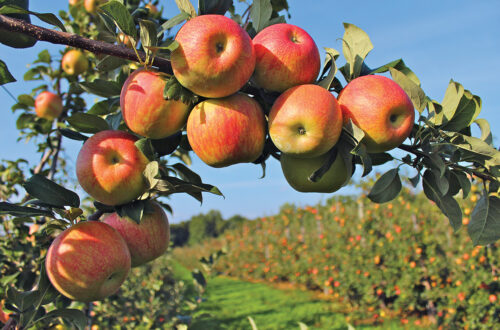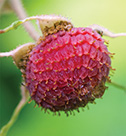By Anne Rowlands
SEPT-OCT 2012 – Obviously I grew up in a bit of a bubble. Until recently, I’ve been unaware of the robust fig-growing culture in Connecticut. Though I’ve enjoyed my fair share of fig cookies, dried figs, and the fresh fruit that occasionally becomes available in the supermarket, I never suspected that growing them here was a possibility.
I figured they were as unsuitable to this climate as citrus trees. But, while working on this story, I found that these little trees are everywhere – in front yards, back yards, city streets and parking lots. So, for those of you with no experience with figs, here’s something to get you started on your own adventure with this delicious and historied little fruit.
Mediterranean Vistas Not Necessary
Several years ago, a friend and coworker at the Wilton Library mentioned that she and her Madrileño husband grew figs at their Ridgefield home. I was astounded. She was bemused. Their trees were a few years old, planted in half whisky barrels that they wheeled outside into full sun each spring after overwintering in the garage. From these few little trees they harvested a good number of figs.
It sounded like an easy method, though a bit tricky if one has a small house. She went on to tell of gardeners who actually laid their fig trees down and buried them for the winter. Wow. OK, so you dig a big trench, but how would you lay a tree down? What about the roots? Enjoying my puzzled look, she continued and told me that some gardeners wrap their fig trees up tightly for winter. At this news I vowed to explore these zone-busting fig growing methods and am glad to report that it’s completely within your reach to bring the joy of fresh figs to your Connecticut back (or front) yard!
As I began to ask around, I located another friend and coworker whose uncle in Trumbull has three big fig trees in the back yard. Uncle Fiore apparently lays them down and covers them up each fall . . . bingo! Road trip for research!
Lie Down and Let Me Tuck You In
Fiore Mallone’s compact back yard in Trumbull features three enormous 15-20 year old fig trees that stand over 10 feet tall. In late fall, after the leaves are gone, Fiore wraps the thick branches up gently but securely against the trunk with rope to prevent damage when he lays the tree down.
He is able to lay down the trees by severing the roots on one side (always on the same side, each year). Once down, Fiore covers each tree with leaves and compost, then surrounds each with a large plywood “coffin,” covered with tarps to shield them from winter cold and snow.

Joe Gallo’s just-uncovered figs in barrels, snug against the in-ground trees and insulated with leaves and compost.
Upright, Wrapped Up Tight
Joe Gallo of North Haven is another first generation Italian with a passion for figs, but a different approach to overwintering them.
One very warm March day I visited his still-enshrouded back-yard fig “grove.” He explained that under this imposing mound were trees in containers ranging in size from half whiskey barrels to plastic 50-gallon drums, along with two fig trees that remained in the ground. Each fall Joe ties up the branches of the bigger ones, groups all together snugly, and then fills the spaces between them with brown paper leaf bags filled with leaves, plus compost, dirt, and more leaves tossed in where needed. He then carefully covers all with quilted movers’ blankets, overlays that with a construction blanket (used to cover freshly cured concrete in cold weather). A final layer of old swimming pool covers completes the winter preparation. Several lengths of PVC pipe are inserted here and there for ventilation.
On this early spring day he uncovered a section and we found buds already forming on the old wood, along with some spots with dieback that he simply pruned out.
Jose Morais of Bridgeport has a show-stopping group of three 15-year-old fig trees on his property – one was brought as a cutting from his native Portugal. Like our other fig wranglers, he ties up the branches after the leaves have fallen, wraps them in house insulation, then plastic or vinyl to keep moisture out. He, too, inserts PVC pipe in at the bottom for ventilation, making sure to put mesh over the outside opening of the pipe to keep little critters from coming in and chewing on the trees. Jose cautions that when the weather starts to warm up you must take extra care to start uncovering — from the bottom – to avoid overheating the plants.

Lee Ganim shows off a fresh fig from one of the trees in his greenhouse.
Bring Them In and Make More!
Lee Ganim at Ganim’s Garden Center in Fairfield is of Lebanese descent and, true to his heritage, possesses an innate understanding of growing figs. Several sizeable trees growing from Ganim’s greenhouse floor earn their keep by producing several bushels of fruit each year.
Pruning the trees to keep them within bounds provides an opportunity to propagate, and a number of hardwood cuttings were rooting in a nearby vase of water, while softwood cuttings were taking hold in pots.
To start his softwood cuttings, Lee sticks the cut end in a tiny bit of rootone, then into a pot filled with moistened Master Nursery Bumper Crop soil. A plastic bag is placed over the top to keep a moist, warm environment. If I was to try this they’d be a mildewed disaster, but having a greenhouse and a background in plant propagation gives Lee a decided edge.
I bought my first fig from Ganim’s, a 2-foot-tall Chicago Hardy, and was advised to sink the pot into the ground in full sun. He suggested that – if watering is needed — we use the very hot water from the garden hose that’s been basking in the sun. When pulling the plant up for overwintering in our unheated garage, I have been instructed to prune off roots that have grown outside the pot. Root pruning makes more buds. Then water it twice a month during the winter months.
And Even More Variations
One gentleman, I’ve been told, lifts the tree out of the soil, plants it bare root in an empty garbage can with drainage holes cut in it, surrounds the roots with hay or straw, sticks it the garage and waters it twice a month.
Judith Floria Toscano in Rhode Island says, “My husband is currently raising five fig trees in Westerly, R.I., three of which are bursting with fruit and two only a couple of feet tall. Two of the fruiting trees are in pots and were greenhoused through the winter until about April 1. The other is in the garden and it was overwintered by slightly uprooting it, burying it in a trench and covering it with leaves and dirt until spring. It is the common method used by Italians in this area. Care needs to be taken when uncovered, because branches can be broken. He gave a large cutting (3 ft.) to our local bakery for future use in her baked goods. She was thrilled!”
It appears that the materials chosen to protect overwintering trees outside are based on trial and error by each family or group. Some rope, blankets, burlap, plastic, tarps, home insulation, old carpet, kiddie pools, leaves, dirt, compost – what have you – hold everything down against the wind, add some pipe for ventilation, and enjoy your winter while anticipating a fresh fig harvest next year.
Tips on Care
Figs like it hot and sunny and don’t require a lot of care.
When overwintering indoors, put the fig in coldest part of the garage and water twice a month.
In summer/fall, when bearing, withhold water after the figs are almost mature.
To feed, Lee Ganim recommends Plant Tone. He sometimes mixes
5-10-10 with it.
For bugs, Lee recommends using dormant oil spray – 5.33 ounces to a gallon of water. You should spray before you put them away for the winter.
Resources
Two super websites that provide lots of information on care, varieties, and history are figs4fun.com, suggested by Dan Furman at Cricket Hill Gardens, and treesofjoy.com, suggested by Lee Ganim of Ganim’s Garden Center.






One Comment
Roy Bachinsky
Found site by way of Natureworks